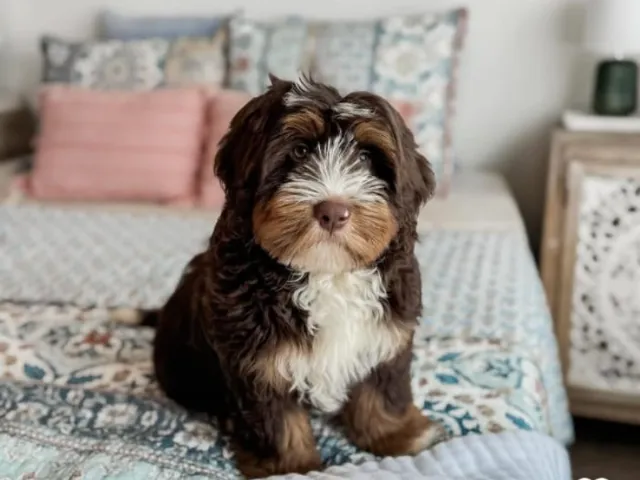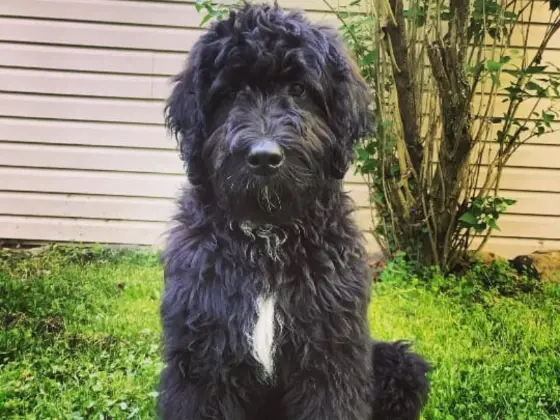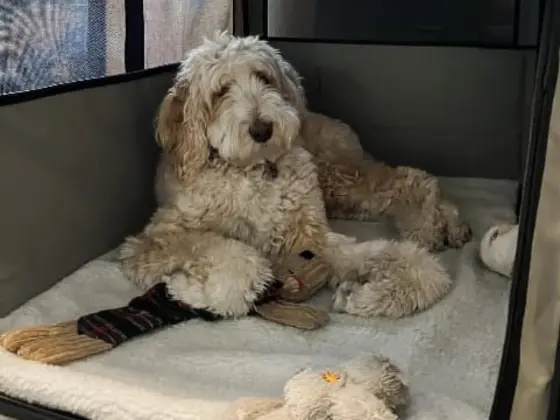How to Socialize Your Bernedoodle Puppy Effectively (Behavior Guide)
“A well-socialized puppy today is a confident dog tomorrow.”
The First Step Toward a Happy, Confident Dog
Bringing home a Bernedoodle puppy is pure joy — soft fur, wagging tail, and endless energy. But that excitement also comes with responsibility. One of the most crucial steps for a healthy, well-balanced dog is early socialization.
So what is socialization?
Socialization means gently exposing your puppy to a wide variety of people, pets, places, sounds, and situations during their early months. It builds trust, confidence, and good behavior — setting the stage for a calm and friendly adult dog.
“Socialization isn’t just a phase—it’s a foundation.”
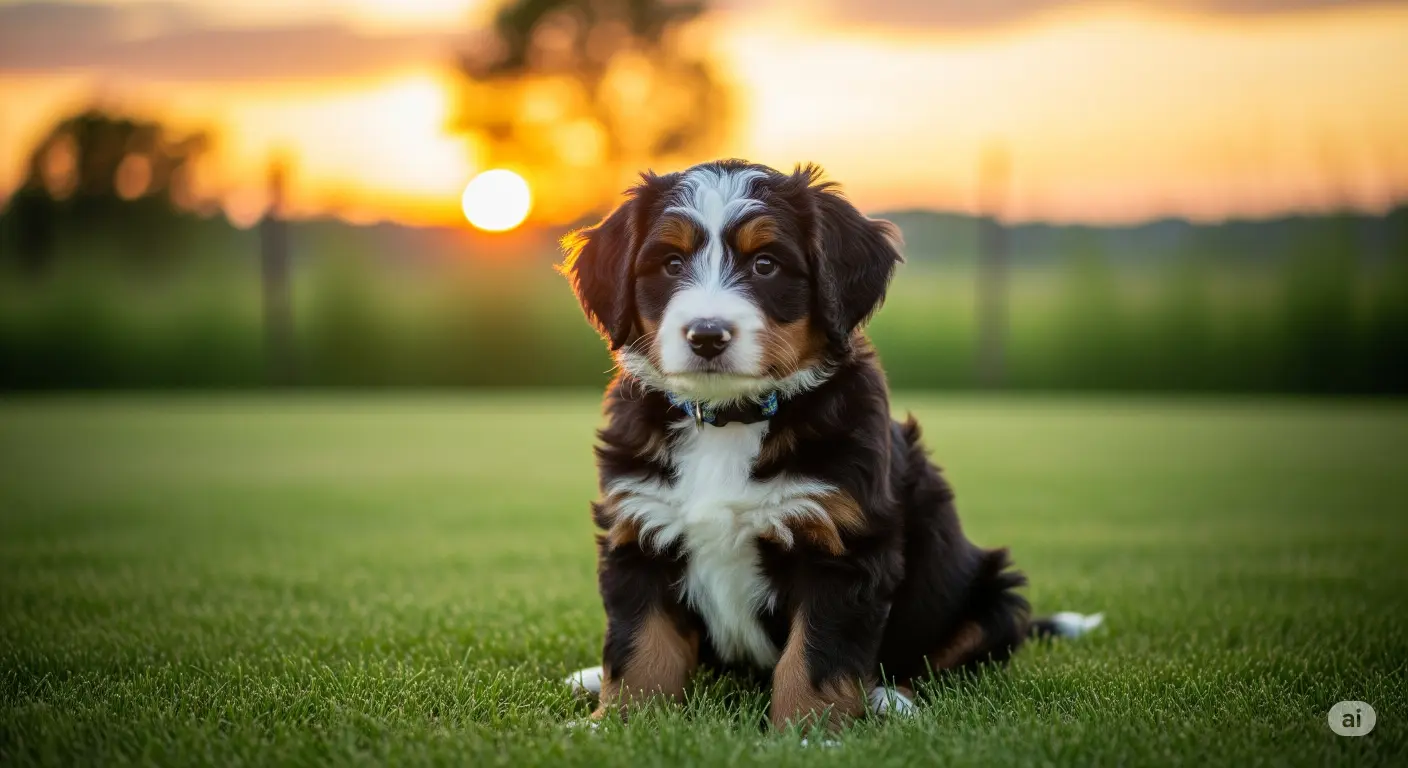
Why Socialization Matters for Bernedoodles
Bernedoodles are a hybrid of the Bernese Mountain Dog and Poodle. They’re known for being gentle, intelligent, and affectionate — but they can also be cautious or shy without proper exposure to the world.
Without socialization, Bernedoodles may:
- Bark excessively at strangers
- Fear loud noises or new places
- Struggle with grooming or vet visits
- Become reactive around other animals
“Dogs learn how to behave in the world by being in the world.” – Dr. Ian Dunbar
Early and positive social experiences can help your pup grow into a relaxed, friendly companion.
Alt text: Bernedoodle puppy sniffing hand of an elderly woman
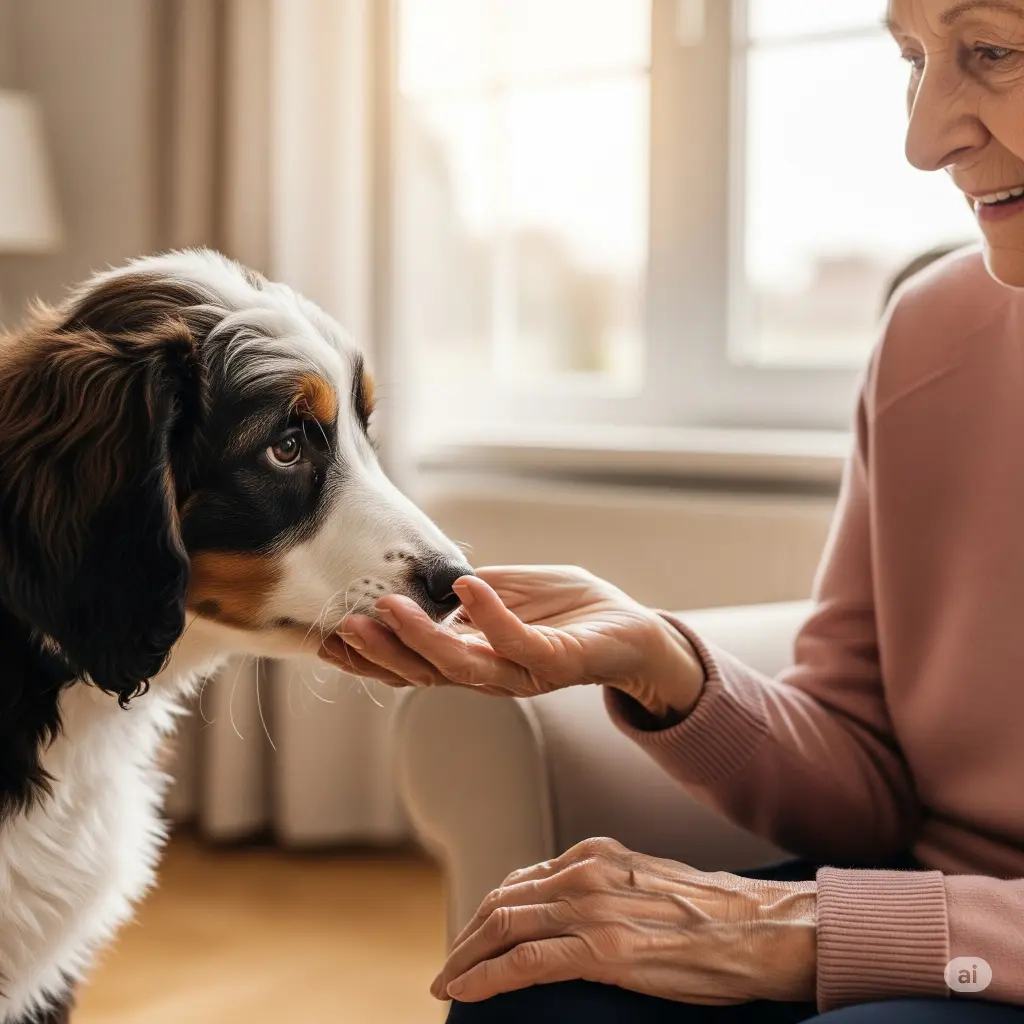
When to Start Socializing Your Bernedoodle Puppy
The best window for socialization is between 3 and 14 weeks of age. During this critical time, puppies are naturally curious and more open to new things.
If your puppy is older, don’t worry. You can still socialize — but you’ll need to be extra patient and gentle.
Look for early signs of:
- Curiosity (sniffing, tail wagging)
- Hesitancy (pausing, hiding)
- Fear (trembling, barking)
Respond kindly and reward bravery with praise or a small treat.
How to Socialize at Home First
Before taking your puppy into the outside world, begin with what’s close and safe — your home.
Start with:
- Introducing household members slowly
- Playing calm music or ambient noise
- Touching their paws, ears, and mouth (helps with grooming)
- Getting used to collars and harnesses
- Giving treats for brave behavior
Use soft toys, a playpen, and short training games to make home feel like a positive learning space.
Alt text: Bernedoodle puppy surrounded by toys on a cozy rug
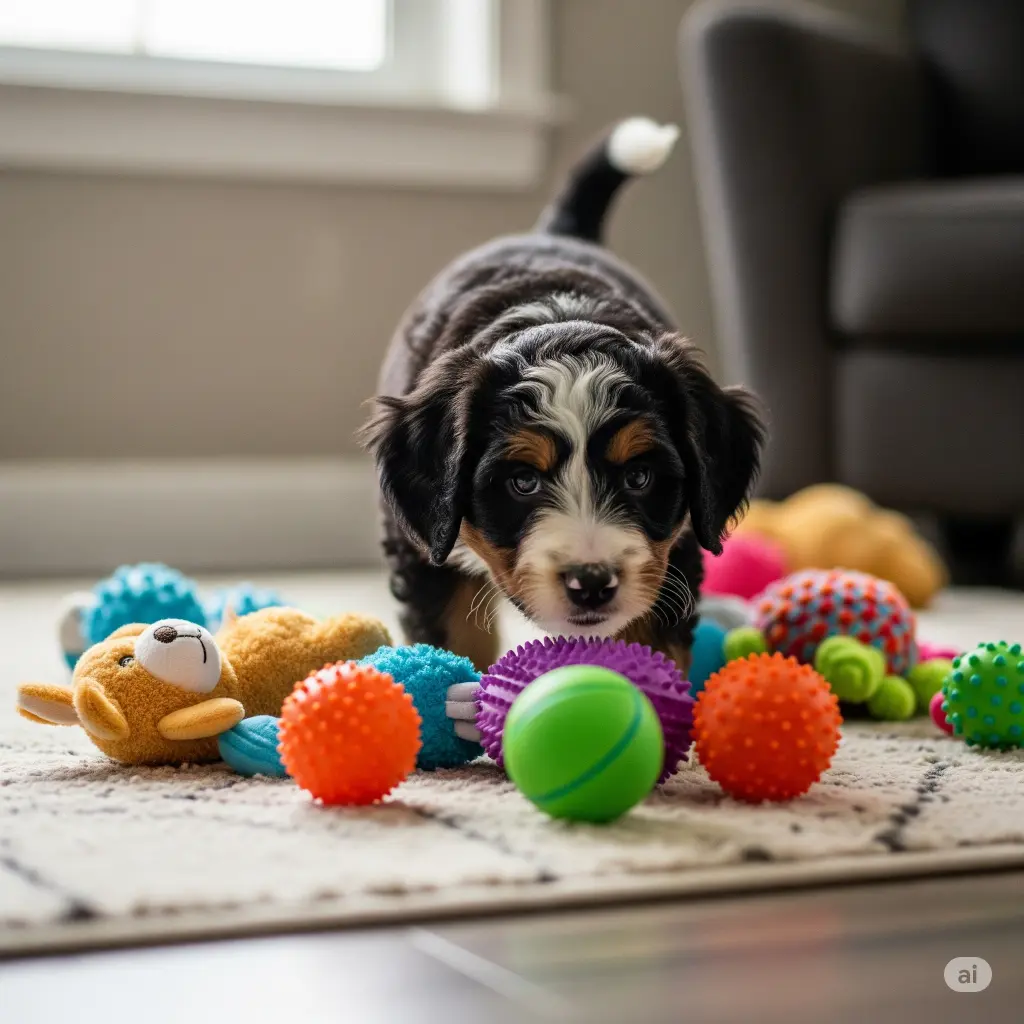
Introducing to New People
Begin with people your puppy trusts — like family or close friends. Let them:
- Sit on the floor (less intimidating)
- Use a calm voice
- Offer a treat in an open hand
Avoid rushing or forcing interaction. Let your puppy approach on their terms.
Once confident, try:
- Kids of different ages
- People wearing hats, masks, or uniforms
- Guests with walking sticks or wheelchairs
Each meeting builds your pup’s social memory — shaping them for life.
Socializing with Other Dogs
Dogs are social animals, but not all interactions are safe. Choose calm, friendly dogs for first playdates.
Dos:
- Start with one-on-one meetings in neutral areas
- Watch for body language (tail wag = good, stiff posture = not good)
- Keep leashes loose, not tight
Don’ts:
- Avoid crowded dog parks too early
- Never force your puppy into play
A few short, positive sessions are more effective than long, stressful ones.
“Let dogs meet like humans: politely, calmly, and with respect.”
Exploring the Outside World
Once your pup has had its first set of vaccinations, you can slowly introduce them to the outside world.
Great social exposure ideas:
- Short walks with lots of sniffing
- Car rides with the windows slightly open
- Sitting outside grocery stores (but at a distance)
- Visiting dog-friendly stores (like pet shops)
Carry treats in your pocket and reward for every calm, brave reaction.
Alt text: Bernedoodle puppy on leash exploring park with flowers
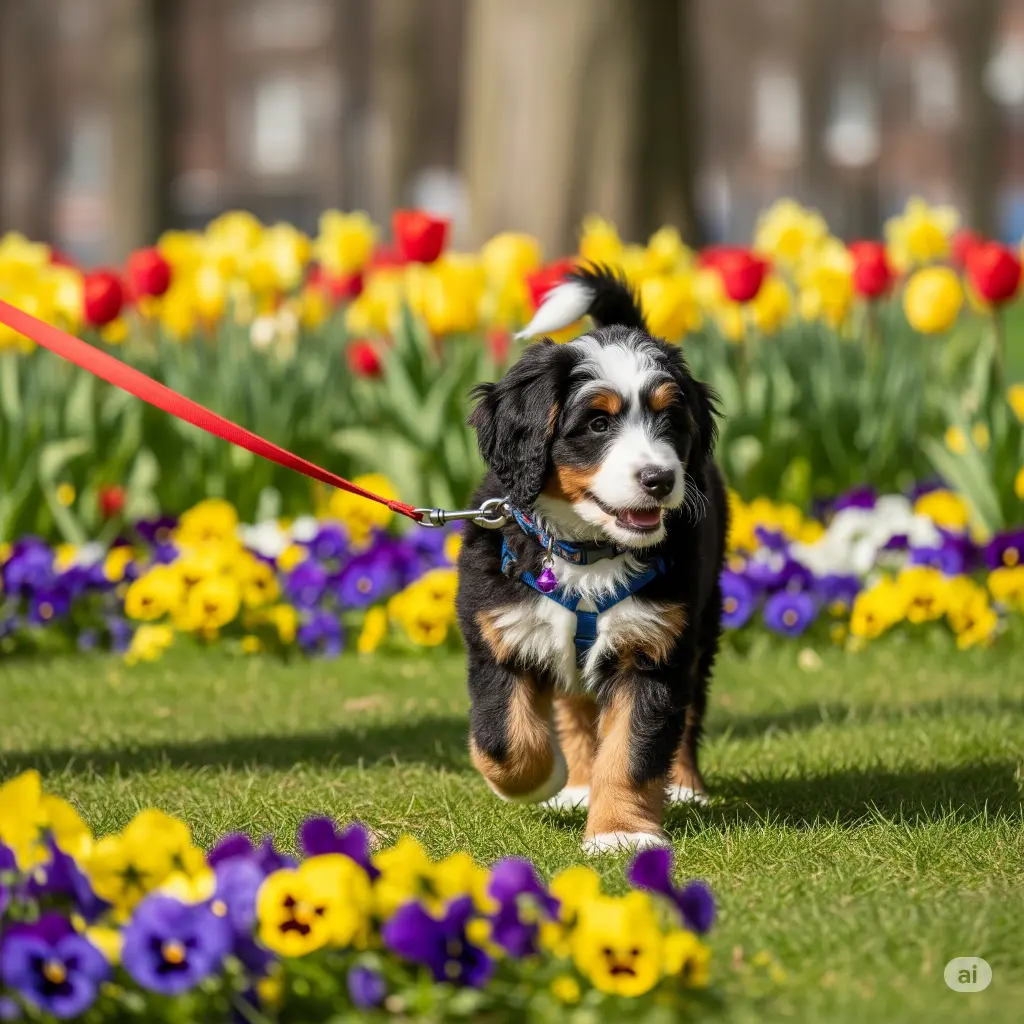
Handling Fear, Shyness, or Aggression Gently
It’s normal for puppies to show fear, especially if they weren’t socialized early. The key is to stay calm and never punish fear.
Helpful tips:
- Use treats and soft praise for calm behavior
- Redirect attention (like playing a game)
- Speak softly and kneel down to their level
If aggression or fear escalates, consult a certified dog trainer — preferably one who uses positive reinforcement methods.
Creating a Socialization Schedule
Routine builds confidence. Here’s a basic weekly socialization plan:
| Day | Socialization Activity |
|---|---|
| Mon | Meet 1 new person at home |
| Tue | Explore 1 new room or object |
| Wed | Go on a 5-minute outdoor walk |
| Thu | Listen to new sounds (TV, vacuum, etc.) |
| Fri | Car ride with a family member |
| Sat | Short playdate with a calm dog |
| Sun | Visit a quiet outdoor area (park or café) |
Mix and repeat — keep it short, safe, and fun.
Common Mistakes to Avoid
Avoid these socialization slip-ups:
- Overwhelming too quickly: One thing at a time
- Skipping socialization: Leads to long-term behavior problems
- Forcing interactions: Let your pup choose the pace
- Inconsistent routines: Puppies learn best with repetition
- Ignoring signs of stress: Panting, trembling, hiding = take a break
Mistakes are part of the process. Just learn, adjust, and move forward.
Final Thoughts: Celebrate Every Small Win
Every new tail wag, calm reaction, or playful moment is a step forward. Socializing your Bernedoodle isn’t about perfection — it’s about progress, trust, and love.
Whether adopted or bought, your pup deserves a chance to feel safe in the world.
“You’re not just training a dog — you’re shaping a future companion.”
Take it one day at a time. Enjoy the journey, laugh at the setbacks, and celebrate the little victories.
Your Turn!
Have you started socializing your Bernedoodle?
What worked best — and what didn’t?
Share your puppy’s story in the comments below! Let’s learn and grow together
“Want to read more about bernedoodles? Click the links below to explore more!”
21 Questions About Bernedoodles Answered
10 Must-Know Pet Supplements for a Healthier Dog in 2025

